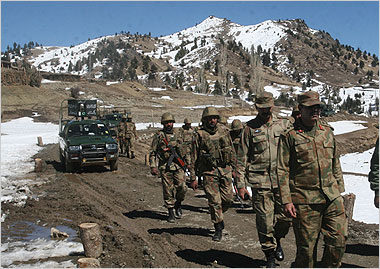Cut Military Aid Now
The New York Times |

By Parag Khanna
The U.S.-Pakistan relationship is a microcosm of international relations more broadly: talking about change has little correlation to actually achieving it.
Before the assassination of Osama bin Laden, the Government Accountability Office released a study criticizing the lack of progress in making aid to Pakistan more effective. Far less has been spent than promised, and far too few inspectors have been assigned to oversee implementation of the projects.
It is nothing new to assert that Pakistan’s government is incompetent when it comes to national policy and complicit at some level in the spread of radicalism within its borders — with some parts of the government quite ignorant as to who is doing what.
This state of affairs has existed for decades, with Pakistan’s society suffering and its institutions crumbling while it issues statements in its own defense. After Bin Laden’s killing, some are calling for America to reduce its presence in the region, and others are arguing for the need to either cut military assistance and/or make both military and civilian assistance far more conditional on actual progress in eradicating Al Qaeda and combating the Taliban. All of the above are good recommendations.
To take advantage of this inflection point in U.S.-Pakistani relations means focusing more on substance than style, more on policy than money.
First, aid money should be pooled with other donors and private-sector finance mechanisms and directed toward specific infrastructure projects like dams, power plants and roads. This way, there would be monitoring among the various investors and corruption could come to light more quickly than through direct support for Pakistan’s official ministries.
Secondly, military assistance should be dramatically reduced. Pakistan’s military has all of the soldiers, guns, ammunition and equipment needed to move about in the tribal areas and to begin to clear them of Taliban forces. They only need — and have already gotten — access to drones and the intelligence they can provide.
Lastly, the regional “Silk Road” strategy which the late Ambassador Richard Holbrooke championed must be the guiding vision of America’s approach to the region. Central Asia, Afghanistan, Pakistan, Iran, India and China need to embedded in a regional economic framework that promotes cross-border commerce, trade, investment and integration. Only then will all parties in the region start to take joint responsibility for their own affairs — and Pakistan can get what it wants: America to leave.